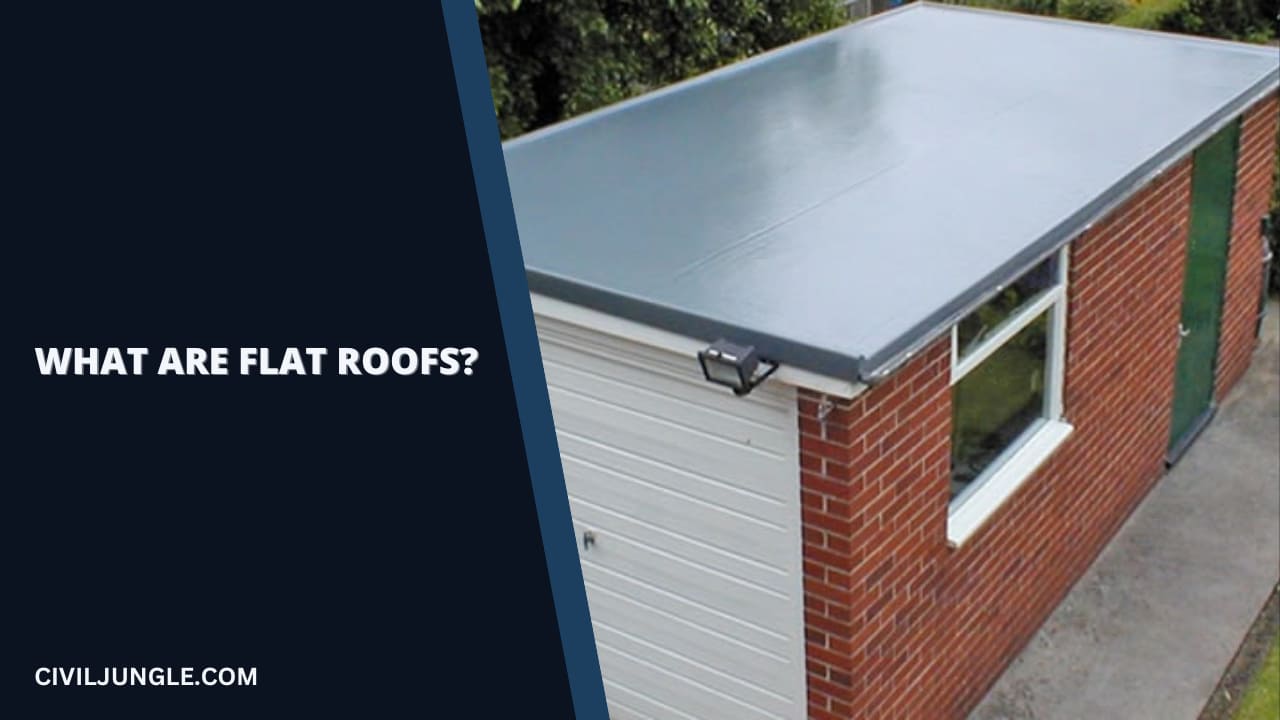
What Are Flat Roofs?
Too many types of sloped roofs, a flat roof is almost level in contrast. Throughout the world, on commercial buildings, flat roofs or low-slope roofs are commonly used. A sloping roof has a slope of 3 in 12 or 1: 4 according to the National Roofing Contractors Association.
This type of roof exists all over the world and mostly where is Warner climate, rainfall is less and freezing is unlikely. In architecture view, flat roofs are characteristic of Persian, Egyptian, and Arabian styles.
Types of Flat Roofs

Nowadays Flat Roofs Becomes very Popular for Their Economical Roofing Option for Industrial and Homebuilding. This type of Flat Roof Provides Adequate Space for Install Rooftop Air Conditioning Units, Space for Install Solar Panels, and Also Verdant Rooftop Gardens.
There are have many types of flat roofs that are below-
1. Built-Up Roof
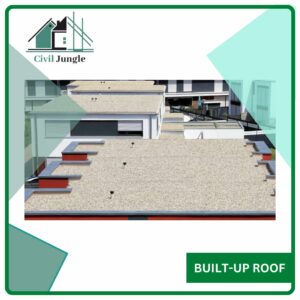
With hot tar and gravel built-up roofs are comprised of three or more layers of waterproof ply sheets. This roofing layer is built up with smooth river stone or gravel to increase the stability and durability of the roof.
By built-up roof system, makes the building heavy for this extra stress is built upon the structure, which can harm your building.
2. Rubber Membrane
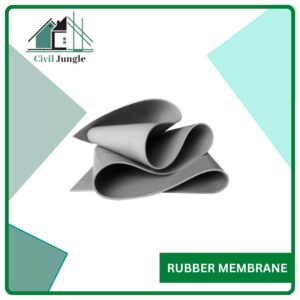
Nowadays rubber membranes have become a popular flat roofing material and also called “ethylene propylene diene terpolymer” or EPDM. In the rubber membranes, leaks can be easily repaired and the cost of the repair material is very low.
From the older flat roof systems like modified and BUR, rubber membranes are more durable and relatively lightweight. With the natural dark color of rubber membranes, making it more heat observer so making it light color will be costly.
3. PVC Membrane
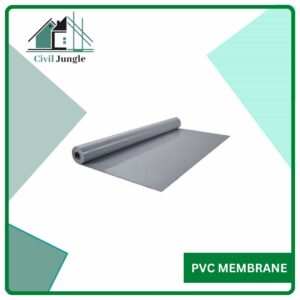
PVC roofing membranes are constructed with PVC thermoplastic that is laminated with UV resistant material and it’s also from a continuous filament lattice known as a scrim.
The PVC roofing technic is a very modern and effective technic for today’s roofing construction. When the fire source is removed, when a flame is not sustaining by PVC membranes.
4. Modified Bitumen
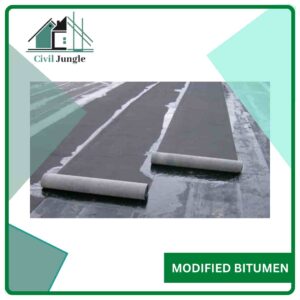
For DIY installations making it feasible, a single layer of adhesive roofing material is used for Modified Bitumen Roofs. The modified bitumen is light in color that’s helps reduce facility coast HVAC coast and also helps reflect some infrared energy that’s come from the sun.
Can be a fire hazard of the torch-down system that using modified bitumen for flats roofs. And another con is it is less durable and less resistant than the other construction materials. It is an easily available material so that uses ps to maintain the cost of the building.
How Long Does a Flat Roof Last?
A flat roof comes with a warranty of 15 to 20 years but it’s at least the last 25 years if we installed it properly and maintenance with some precautions.
How Much Does Flat Roof Replacement Cost?
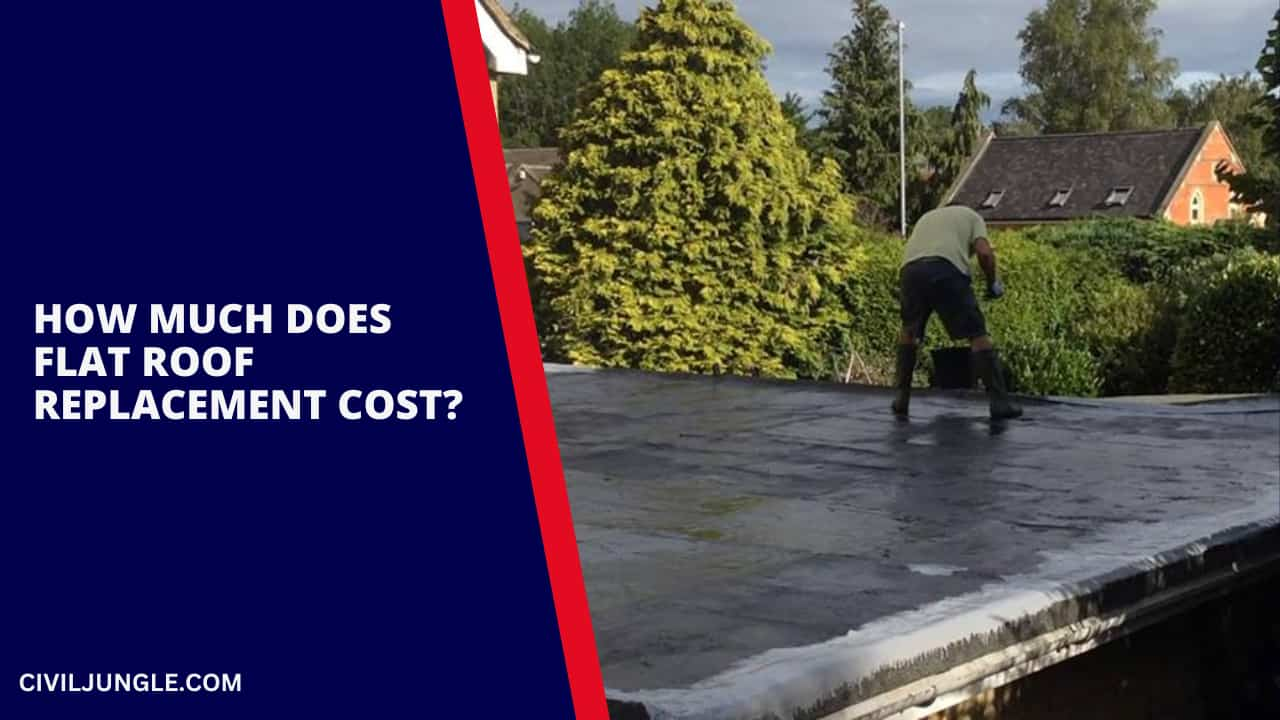
A flat roof replacement cost is varied with its size, but most people spent $7655 to $9104 for a 1600 sq. ft. roof. But the international average cost of flat roof replacement is $8240 nearest.
And the flat roof replacement cost is varying from lower-end $6980 to high end $11300. And also, the replacement cost of a flat t roof is varying with the area.
What Is Flat Roofing Material?
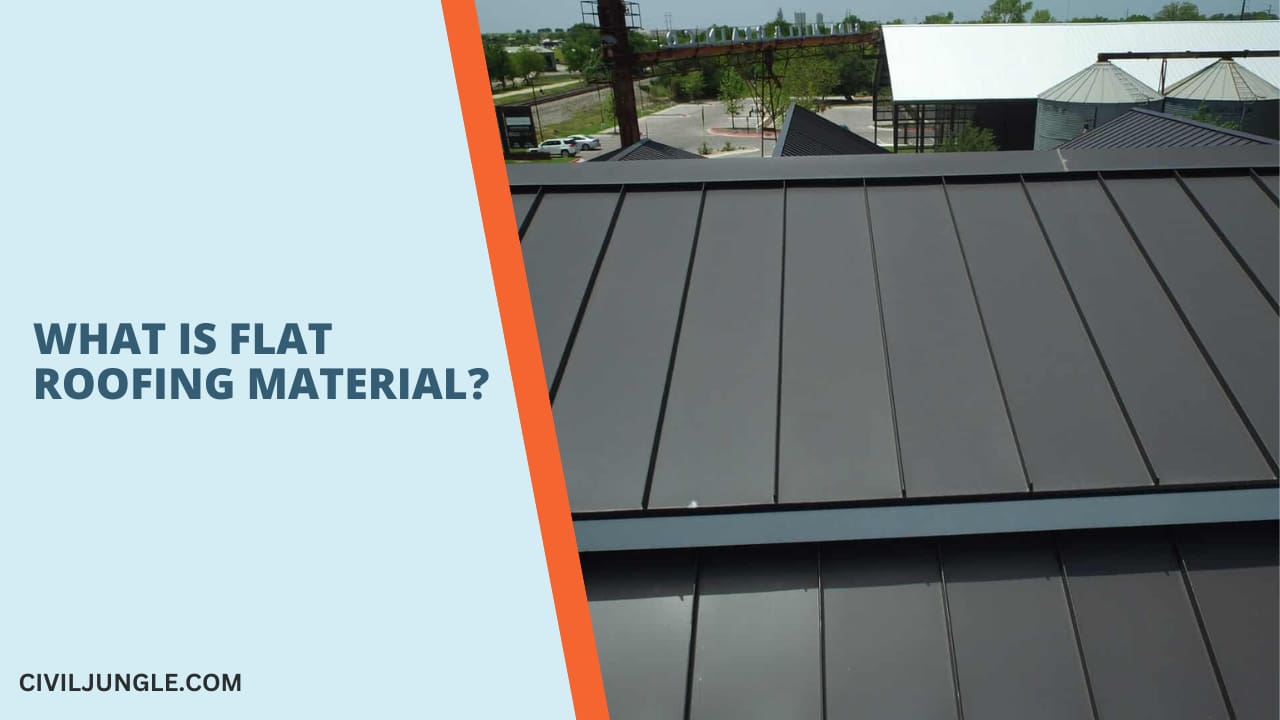
A variety of materials can be used to make a flat roof. The most common ones include EPDM rubber, single-ply (TPO, PVC), modified bitumen, built-up roofs (BUR), and spray polyurethane foam.
Many homeowners choose either EPDM or TPO. EPDM roofs are affordable and can reach a lifespan of 30+ years. TPO roofs are easy to install and maintain, and their white color can help reflect heat from the sun and improve a building’s energy efficiency. More detail are as follows.
Pros and Cons for Flat Roof Materials
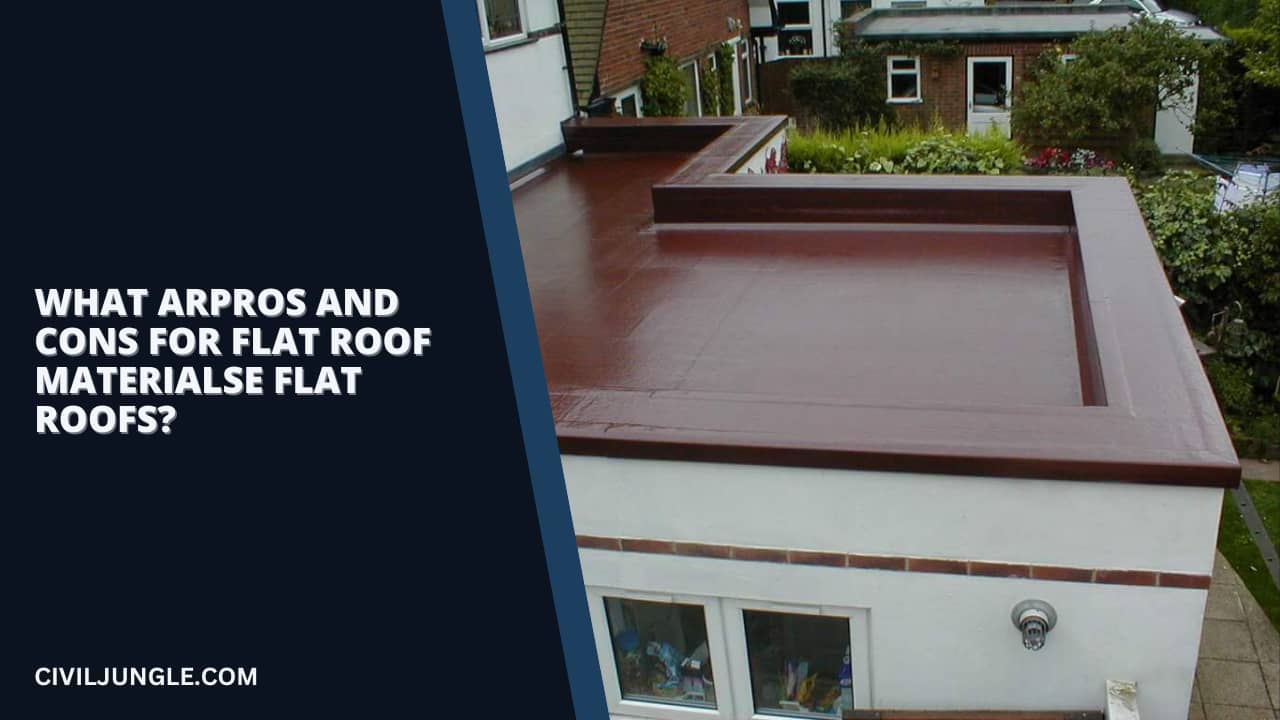
There are have many types of flat roofing materials that are below-
What Is Pvc Membrane?
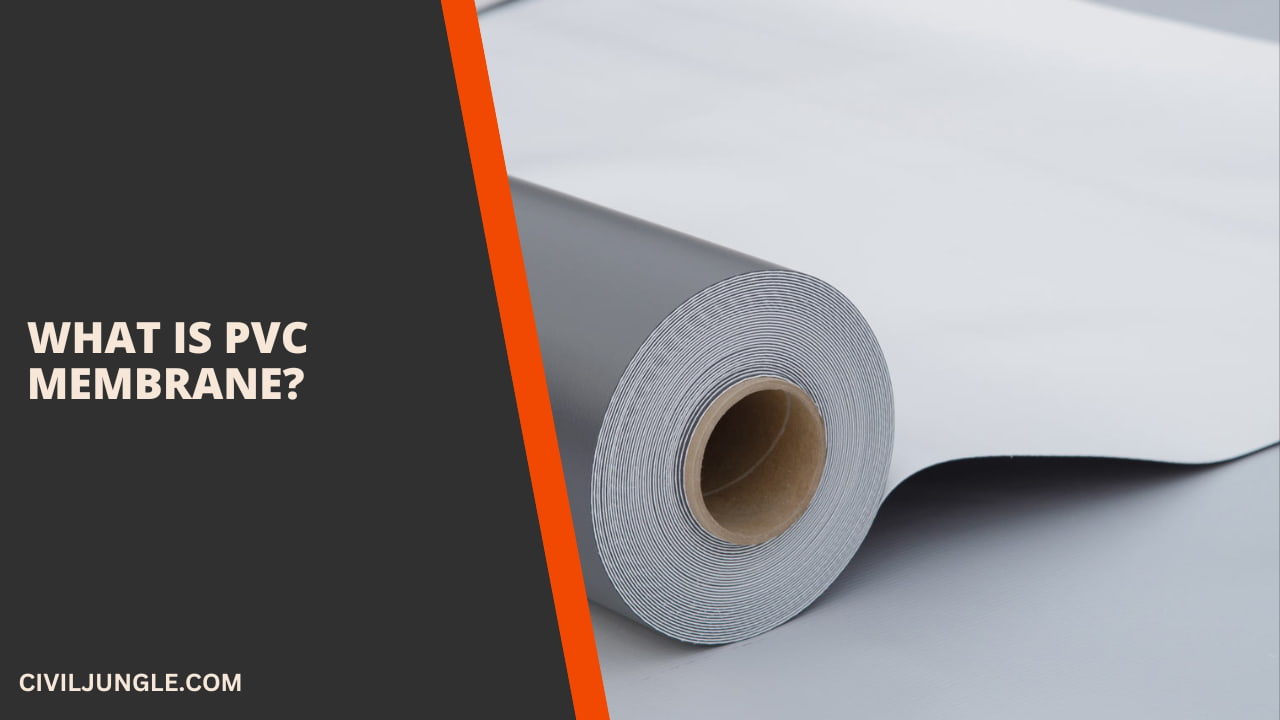
PVC roofing membranes are constructed with PVC thermoplastic that is laminated with UV resistant material and is also from a continuous filament lattice known as a scrim.
The PVC roofing technic is a very modern and effective technic for today’s roofing construction. When the fire source is removed, when a flame is not sustained by PVC membranes There are have many pros and cons of PVC membranes that are below-
Pros of PVC Membrane
- From other roofing system PVC membranes has high flame resistance that helps to provide it “A – class” fire rating.
- For its super flexibility, with this the customer can make their desired rooftop, also this reason makes this very popular.
- For its lighter weight than other roofing materials makes it a more usable material and also for its lightweight it helps to reduce or maintain the building weight.
- For its heat-weldable efficiency, it makes reliable and strong seams.
- PVC membranes are designed to keep the building cooler, highly reflective, and reduce energy demand.
Cons of PVC Membrane
- PVC membranes make with some environmental toxins that’s makes a harmful effect on the atmosphere.
- The uses of PVC membranes increase the construction cost of the whole building.
What Is Built-Up Roof?

With hot tar and gravel built-up roof are comprised of three or more layers of waterproof ply sheets. This roofing layer is built up with smooth river stone or gravel to increase the stability and durability of the roof.
By built-up roof system, it makes the building heavy for this extra stress is built upon the structure, which can harm your building.
Pros of Built-Up Roof
- The uses of the built-up roof make you’re building more fire-resistant and economical.
- The materials that are needed to make a built-up roof are easily available and economical.
- By making this material the roof of the building becomes more durable and stronger or increases the resistance from other roofing materials.
Cons of Built-Up Roof
- From its advantage it has many disadvantages, that is its materials like gravel increase the load of the structure and also put extra stress on the building.
- The construction technique of this type of building is very difficult because this type of roof is made of three layers.
- For this layer of construction, expert masons and laborers are needed that make a building that increases the cost of the building.
What Is Modified Bitumen?
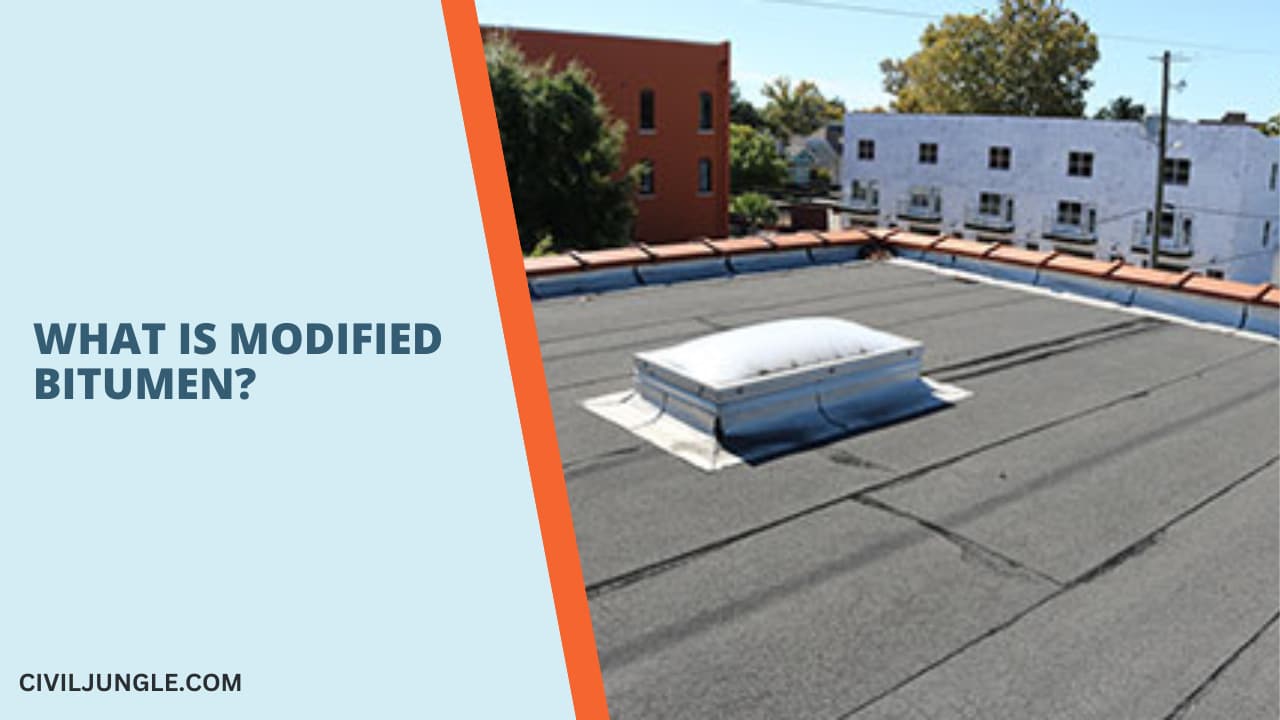
For DIY installations making it feasible, a single layer of adhesive roofing material is used for Modified Bitumen Roofs.
The modified bitumen is light in color which helps reduce facility coast HVAC costs and also helps reflect some infrared energy that comes from the sun. Can be a fire hazard of the torch-down system that uses modified bitumen for flat roofs.
Pros of Modified Bitumen
- The pros of modified bitumen are light in color which helps reduce the facility coast HVAC coast and also helps reflect some infrared energy that comes from the sun.
- It is an easily available material that helps to maintain the cost of the building.
Cons of Modified Bitumen
- The cons of modified bitumen are, that it Can be a fire hazard for the torch-down system that uses modified bitumen for flat roofs.
- Another con is it is less durable and less resistant than other construction materials.
What Is Rubber Membrane?
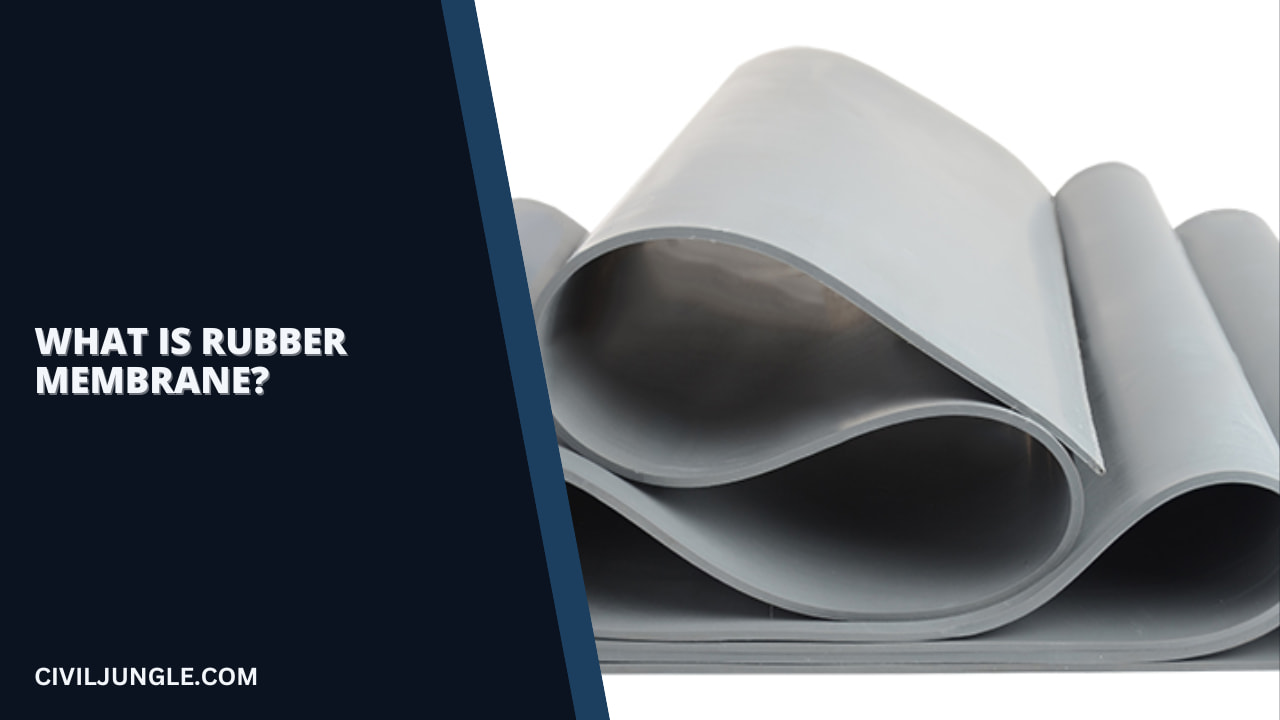
Nowadays rubber membranes have become a popular flat roofing material and are also called “ethylene propylene diene terpolymer” or EPDM.
In the rubber membranes, leaks can be easily repaired and the cost of the repair material is very low. From the older flat roof systems like modified and BUR, rubber membranes are more durable and relatively lightweight.
With the natural dark color of rubber membranes, making it more heat observer so making it light color it will be costly.
Pros of Rubber Membrane
- The pros of rubber membranes are, that in the rubber membranes, leaks can be easily repaired and the cost of the repair material is very low.
- Another pro is, that from the older flat roof systems like modified and BUR, rubber membranes are more durable and relatively lightweight.
- Its uses make the structure more durable and more economical.
Cons of Rubber Membrane
The cons of rubber membranes are, the naturally dark color of rubber membranes, making them more heat observers so making it light color it will be costly.
What Is TPO Roofing?
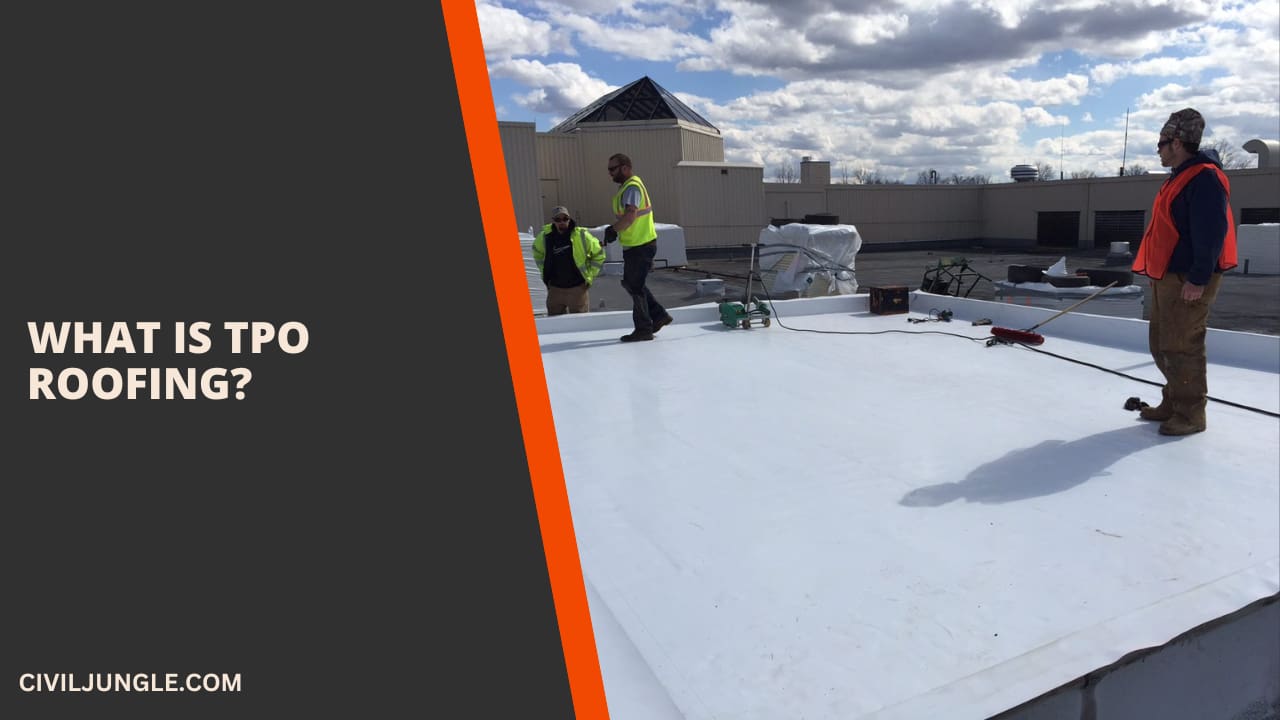
Thermoplastic polyolefin is known as TPO. It is fabricated from ethyl propylene and polypropylene rubbers and is also white.
The TPO is very good at the sun’s heat reflecting for its white color. The TPO is a 100 % recyclable material, so it is very popular nowadays.
Pros of TPO Roofing
- The pros of TPO are, it is very easy to install and can be easily mechanically attached to the roof deck.
- Another pro of TPO is, it is a 100 % recyclable material, so it is very popular nowadays.
Cons of TPO Roofing
- The TPO material is not available easily near the construction site.
- The maintenance cost of TPO materials is high it makes the building costlier.
Flat Roof Replacement Cost Per Square Foot
In recent days flat roofs have become popular because of their cool modern look. The average flat roof replacement cost per square foot is $5 to $10. A flat roof replacement cost varies with its size and the area, but most spend $7655 to $9104 for a 1600 sq. ft. roof.
FAQ: Flat Roofs
What Is a Flat Roof?
A flat roof is a nearly level roofing system that contrasts with sloped roofs. It is commonly used in commercial buildings and in regions with mild climates where heavy rainfall or freezing temperatures are less common. Architecturally, flat roofs are a hallmark of Persian, Egyptian, and Arabian styles.
What Are the Different Types of Flat Roofs?
The main types of flat roofs include:
- Built-Up Roof (BUR): Composed of multiple layers of waterproof ply sheets, topped with gravel or stone.
- Rubber Membrane (EPDM): Made from ethylene propylene diene terpolymer, known for its durability and ease of repair.
- PVC Membrane: Constructed from PVC thermoplastic with UV-resistant lamination, offering modern and effective roofing solutions.
- Modified Bitumen: A single-layer adhesive material that is easy for DIY installations but can be less durable.
- TPO Roofing: Made from a blend of ethylene propylene and polypropylene rubbers, known for its heat-reflective properties and recyclability.
How Long Does a Flat Roof Last?
Flat roofs typically come with a warranty of 15 to 20 years. However, with proper installation and maintenance, they can last up to 25 years or more.
What Factors Influence the Cost of Flat Roof Replacement?
The cost of replacing a flat roof varies based on its size, type of roofing material, and location. On average, replacing a 1600 sq. ft. flat roof costs between $7,655 and $9,104, with international averages around $8,240. Costs can range from $6,980 to $11,300 depending on specific factors.
What Are the Pros and Cons of Pvc Membranes?
Pros:
- High flame resistance with an “A-class” fire rating.
- Flexibility in design.
- Lightweight, reducing overall building load.
- Heat-weldable seams for strong and reliable construction.
- Reflective properties reduce energy consumption.
Cons:
- Contains environmental toxins.
- Can increase overall construction costs.
What Are the Advantages and Disadvantages of Built-Up Roofs (Bur)?
Pros:
- Economical and fire-resistant.
- Durable and increases building strength.
- Easily available materials.
Cons:
- Adds extra weight to the building structure.
- Complex installation requiring expert labor.
- Construction involves multiple layers, increasing difficulty and cost.
Why Might I Choose a Rubber Membrane for My Flat Roof?
Rubber membranes, or EPDM, are chosen for their durability, lightweight nature, and ease of repair. They offer a cost-effective solution compared to older flat roofing systems and have a lifespan exceeding 30 years.
What Are the Pros and Cons of Tpo Roofing?
Pros:
- Easy to install and attach.
- 100% recyclable, making it an eco-friendly option.
- Reflective white color improves energy efficiency.
Cons:
- Limited availability near some construction sites.
- Higher maintenance costs compared to other materials.
How Much Does Flat Roof Replacement Cost Per Square Foot?
The average cost of flat roof replacement is between $5 and $10 per square foot. This cost can vary based on the size of the roof and the type of material used.
What Materials Are Commonly Used for Flat Roofing?
Common materials for flat roofing include EPDM rubber, TPO, PVC, modified bitumen, built-up roofs (BUR), and spray polyurethane foam. Each material has its own set of benefits and drawbacks.

